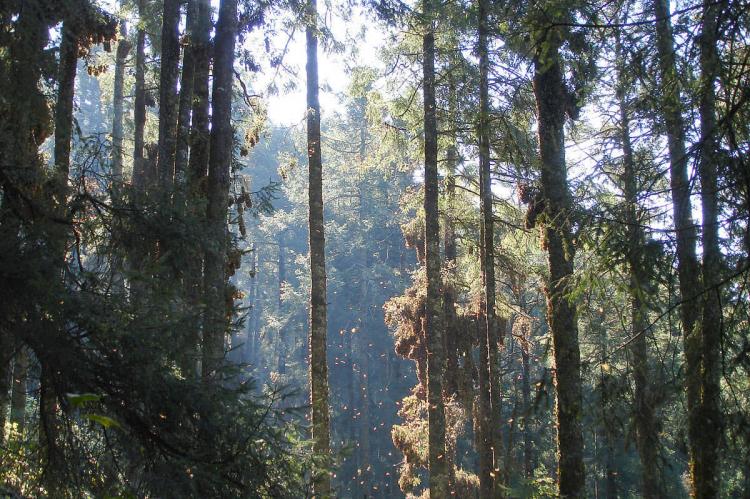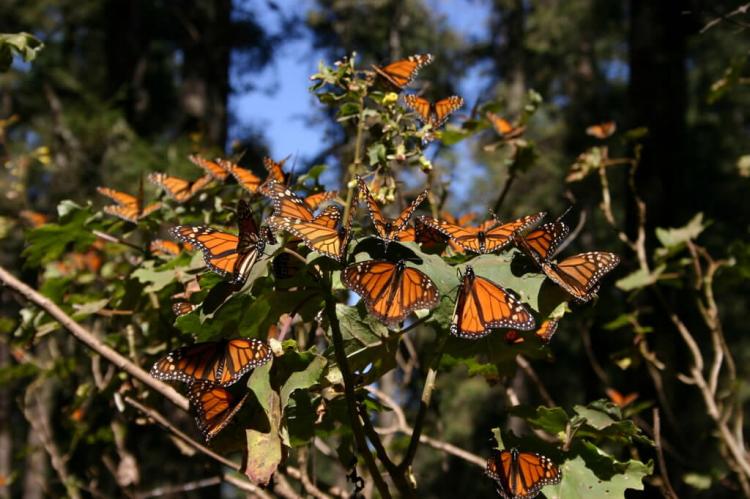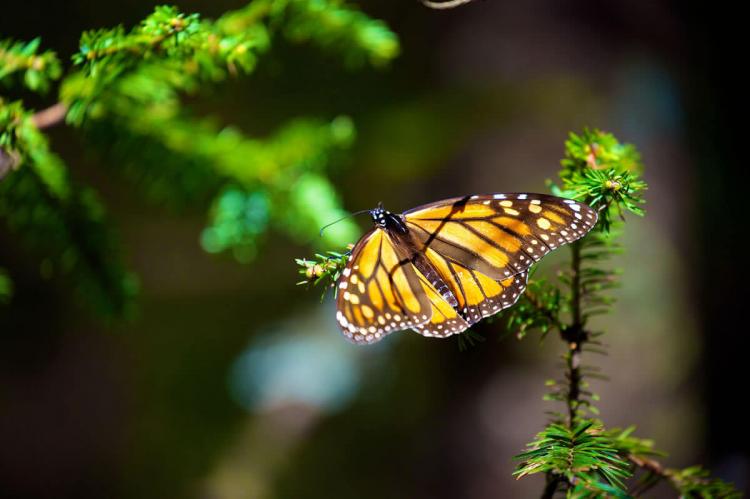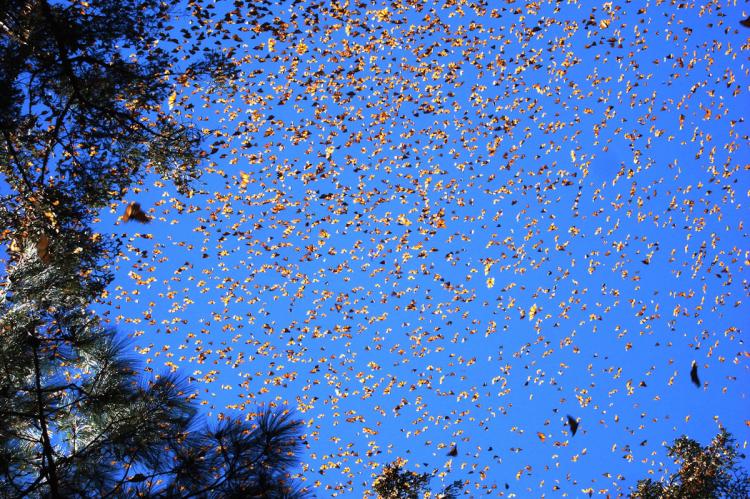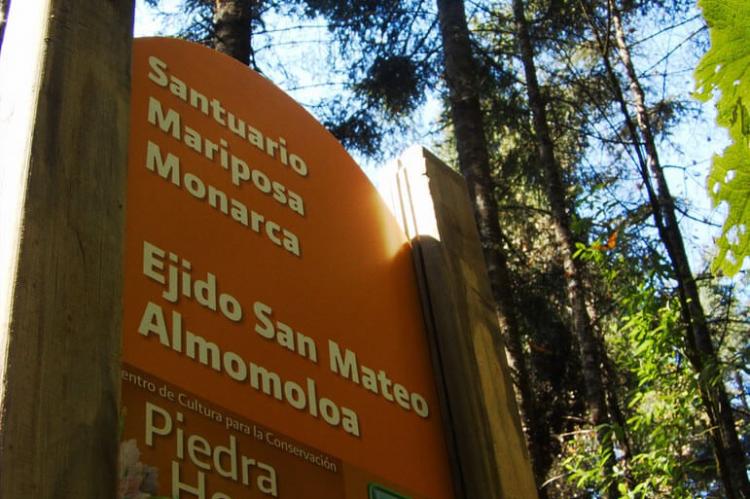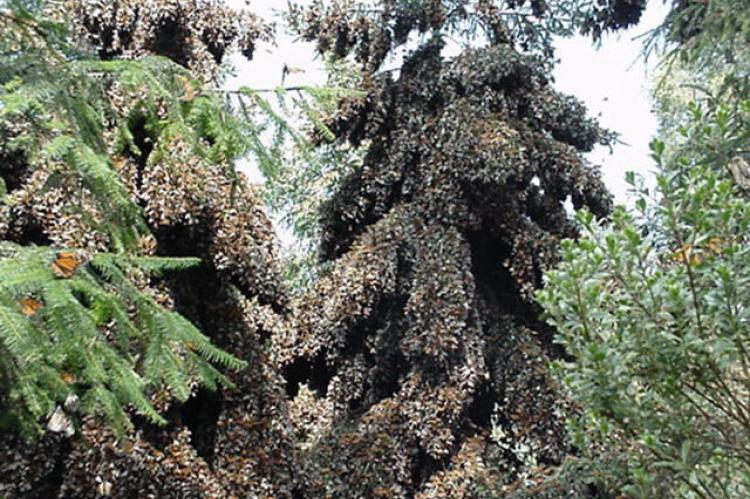Monarch Butterfly Biosphere Reserve: A Sanctuary for Nature's Winged Wonders
Millions of monarch butterflies migrate yearly to their overwintering grounds in central Mexico's forested mountains. This natural wonder occurs in the Monarch Butterfly Biosphere Reserve, a UNESCO World Heritage site that serves as a sanctuary for the butterflies and protects their habitats.
Monarch Butterfly Biosphere Reserve: A Sanctuary for Nature's Winged Wonders
Deep within the rugged forested mountains of central Mexico, a breathtaking natural spectacle unfolds each year – the mass migration of millions of monarch butterflies seeking refuge in their overwintering grounds. The Monarch Butterfly Biosphere Reserve (Reserva de la Biosfera Mariposa Monarca), a UNESCO World Heritage site, serves as a sanctuary for these remarkable creatures, protecting their delicate habitats and ensuring the continuation of one of nature's most awe-inspiring phenomena.
Location and Geography
The Monarch Butterfly Biosphere Reserve is strategically located in the Trans-Mexican Volcanic Belt pine–oak forests ecoregion, straddling the border between Michoacán and Mexico States. Situated approximately 100 kilometers (62 miles) northwest of Mexico City, the reserve encompasses a vast area of 56,259 hectares (139,000 acres) within the rugged, forested mountains of the region.
Ecological Significance
The biosphere reserve's primary mission is to safeguard the monarch butterfly species and its habitat. It plays a crucial role in conserving this iconic insect and the ecosystems it relies upon. Eight distinct overwintering colonies have been identified within the reserve, collectively harboring an estimated 70% of the eastern monarch butterfly population during their annual migration.
Migration Spectacle
Every autumn, millions of monarch butterflies embark on an extraordinary journey, traveling vast distances from various regions of North America to reach their overwintering grounds in Mexico. Originating from areas as far north as Canada and the United States, these delicate creatures follow the Sierra Madre Oriental mountain range, guided by an innate navigational instinct that has fascinated scientists and nature enthusiasts alike.
Upon arrival at the biosphere reserve, the sheer magnitude of the butterflies' numbers is awe-inspiring. They cluster on the reserve's trees, bending branches under their collective weight and painting the landscape in a vibrant orange hue. The beating of their wings creates a gentle, soothing sound reminiscent of light rain, adding to the ethereal ambiance of this natural wonder.
Biodiversity Hotspot
The Monarch Butterfly Biosphere Reserve is more than just a sanctuary for the monarch butterflies; it is a biodiversity hotspot, home to a wealth of flora and fauna adapted to the region's unique physical, geomorphological, climatic, hydrological, and biogeographic features.
The reserve's diverse ecosystems include oak forests blanketing the mountains up to 2,900 meters (9,500 feet) in elevation, pine and oak forests between 1,500 and 3,000 meters (4,900 and 9,800 feet), and sacred fir (Abies religiosa) forests between 2,400 meters (7,874 feet) and 3,600 meters (11,800 feet) above sea level. Cedar, juniper forests, and grasslands also contribute to the ecological mosaic, creating a rich tapestry of habitats for various species.
The reserve is a vital rainfall catchment area, feeding numerous water bodies in the surrounding states. It is also home to various endemic species, such as Pinus martinezii, Ambystoma ordinarium, and Regulus calendula, as well as a diverse array of wildlife, including white-tailed deer, coyotes, long-tailed weasels, grey foxes, rabbits, crows, turkey vultures, horned owls, hummingbirds, reptiles, and amphibians.
Conservation Challenges and Efforts
Despite its protected status, the Monarch Butterfly Biosphere Reserve faces significant conservation challenges. The region's unique physical and biogeographical features and the annual influx of millions of migratory butterflies demand proactive measures to safeguard this delicate ecosystem.
Habitat destruction, illegal logging, and climate change's impact on the butterflies' migratory patterns pose ongoing threats to the reserve's ecological integrity. In response, local authorities, conservation organizations, and international partners have implemented various initiatives to promote sustainable practices, raise awareness, and engage local communities in preserving this natural wonder.
Through collaborative efforts, sustainable tourism programs, reforestation projects, and environmental education campaigns, the biosphere reserve aims to strike a delicate balance between protecting the monarch butterfly migration and supporting the livelihoods of surrounding communities.
Conclusion
The Monarch Butterfly Biosphere Reserve in Mexico is a testament to nature's resilience and the importance of conserving our planet's biodiversity. This sanctuary safeguards the iconic monarch butterfly and its annual migration and serves as a beacon of hope for preserving countless other species that call this region home.
As visitors witness the awe-inspiring spectacle of millions of butterflies taking flight, they are reminded of the intricate connections that bind all life on Earth. This humbling experience inspires a deeper appreciation for the natural world and a renewed commitment to protecting it for future generations.
